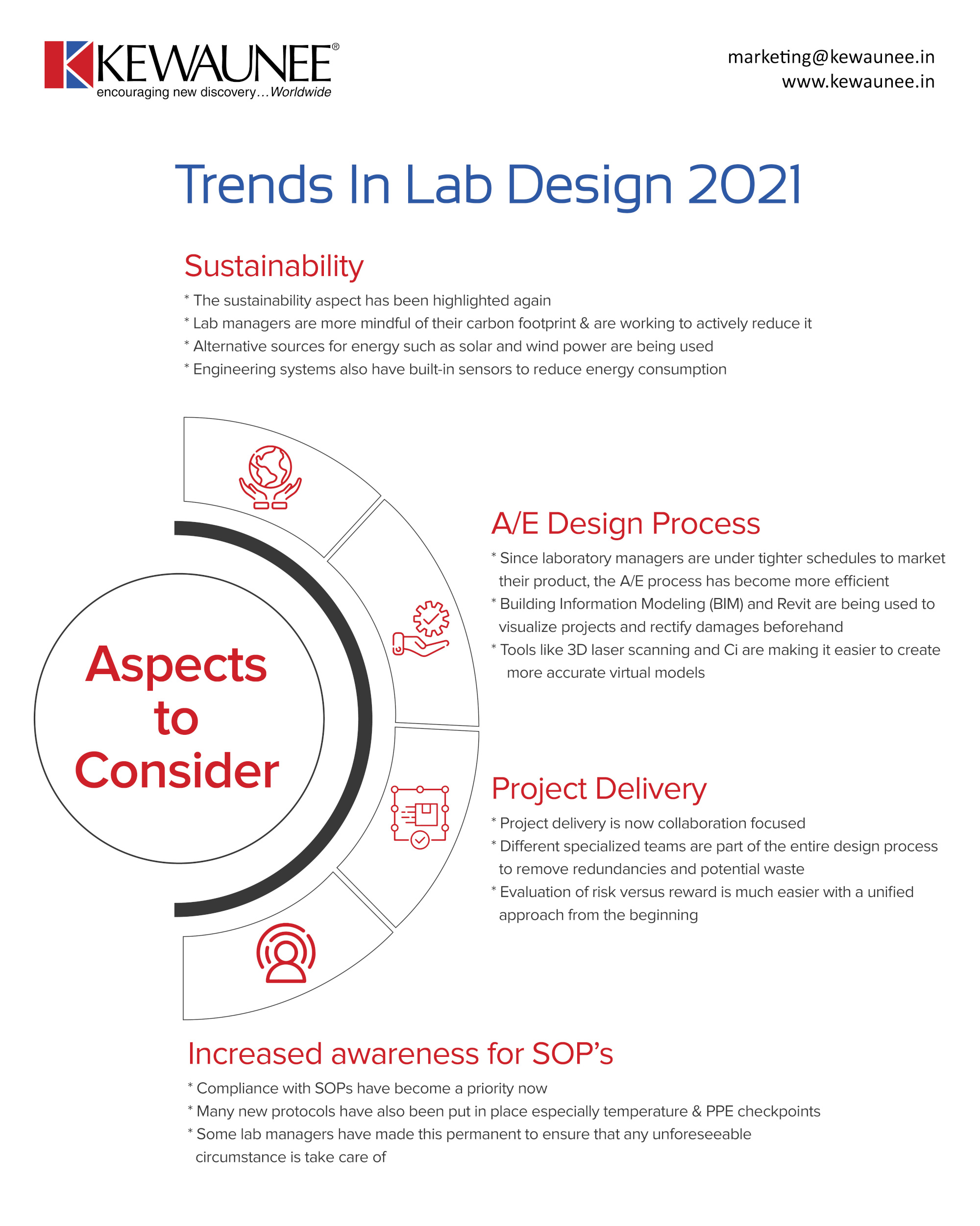Trends in lab design 2021 – Part 2
COVID-19 has changed how we conduct research drastically. There is a growing need for collaborative spaces and optimized processed to ensure speedy delivery of accurate results. This can only be achieved by implementing drastic changes at every level.
In the second part of this infographic (read first part here), we are discussing a few other optimization processes that could ensure that your laboratory remains compliant while producing reliable and accurate data.
| Trend |
What has changed? |
| Sustainability |
- The sustainability aspect has been highlighted again
- Lab managers are more mindful of their carbon footprint & are working to actively reduce it
- Alternative sources for energy such as solar and wind power are being used
- Engineering systems also have built-in sensors to reduce energy consumption
|
| A/E Design Process Efficiency |
- Since laboratory managers are under tighter schedules to market their product, the A/E process has become more efficient
- Building Information Modeling (BIM) and Revit are being used to visualize projects and rectify damages beforehand
- Tools like 3D laser scanning and Ci are making it easier to create more accurate virtual models
|
| Project Delivery (Lean-Integrated) |
- Project delivery is now collaboration focused
- Different specialized teams are part of the entire design process to remove redundancies and potential waste
- Evaluation of risk versus reward is much easier with a unified approach from the beginning
|
| Increased awareness for SOPs |
- Compliance with SOPs have become a priority now
- Many new protocols have also been put in place especially temperature & PPE checkpoints
- Some lab managers have made this permanent to ensure that any unforeseeable circumstance is take care of
|
Source: Ladd, C. (2021, February 19).
Kewaunee, the global leader in total laboratory solutions, empowers organisations to achieve competitive advantage through safe, efficient, and contemporary laboratories. In existence since 1906, Kewaunee powers the laboratories for over 5,000 customers in more than 100 countries.











